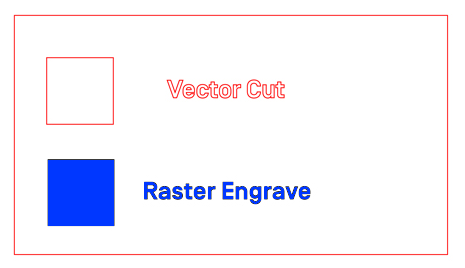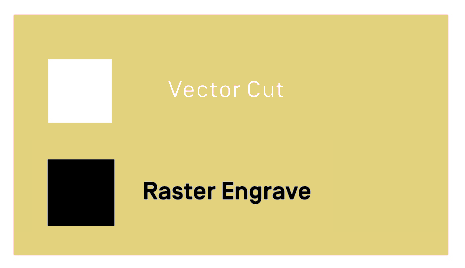Guidelines
Updated November 27, 2023
The FabLab’s Epilog laser cutter can be used to engrave or cut the 3mm wood, 3mm acrylic, and the corrugated cardboard we have in stock; check with your professor to find out if the FabLab is supplying materials for your class project. Scrap pieces of wood and acrylic, and corrugated cardboard are available for all members of the UVM community to use for laser cutting projects. You also may bring in organic fiber materials like basic paper and cotton fabric.
If you need to cut thicker wood, CEMS and studio art students have access to the School of the Arts Woodshop. All members of the UVM community have access to specialized fabrication services (including the cutting of thicker wood) with the Generator Maker space in Burlington, UVM’s IMF, or the Vermont Manufacturing Collaborative.
If you want to cut vinyl or thin plastics , we have a Cricut paper cutter available and you may bring in your own supplies.
If you want to use the fiber laser to mark metal or glass, please send us a note describing the service you need at fablab@uvm.edu.
What We Look For In a Laser Ticket
Because the laser has multiple functions, we need specific information and formatting to be able to properly interpret how you want your project done. For starters we need the following basic information in your email:
- First & Last name
- Email address
- NetID (not the 95#)
- Class number (ex. ARTS 2620)
- Instructor last name
- Overall dimensions of your part with units included (length, width) * Note: Maximum material size is 23.75″x11.75″ *
- Note that files over 9mb should be sent using UVM File Transfer to fablab@uvm.edu
- What laser function you’re looking for (Cut, Engrave, both)
- Is this for a class, research, personal, or SEED project?
- Are there any special instructions for making this part?
- What material do you need used? (Wood, Acrylic, Cardboard)
Acceptable File Formats:
Send Files as: .dxf, .dwg, .pdf, .svg (.dxf or .dwg are preferred)
Formatting
We need to know which lines you want to be cut, and which lines/areas you want to be engraved. We recommend students use the formatting shown below to differentiate between operations:

If the above image was cut onto our wood, it would turn out looking as follows:

